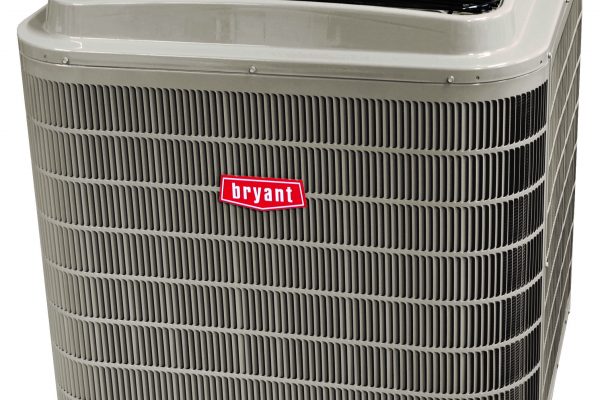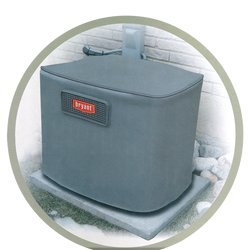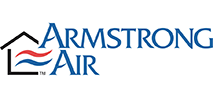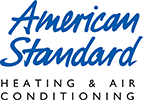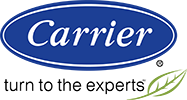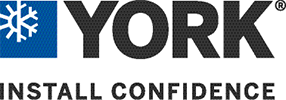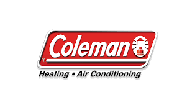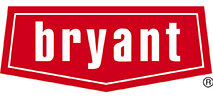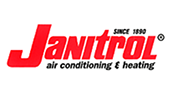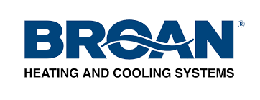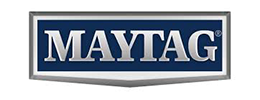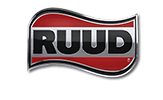In the Miami Valley, a reliable air conditioner is a necessity. Modern air conditioning equipment cools, dehumidifies and cleans indoor air while being more energy efficient than older units. You can rely on the professionals at Hauck Bros., Inc. Heating and Cooling to install a new air conditioner for the first time, replace an outdated or broken air conditioner, or service your current system. Since 1921, we proudly serve both residential and commercial customers with the industry’s leading equipment that will provide comfort for years to come.
HOW DOES AN AIR CONDITIONER WORK?
It doesn’t just blow cold air, there’s far more to it than that! Cooling coils carrying refrigerant help to remove heat and humidity from your home’s air, and your unit’s blower fan helps disperse the cold air. The hot air is released to the outside from the condenser. The compressor helps move the refrigerant through the coils and the condenser to cool the air for the blower to send into your home! Another fan sends the hot air through the condenser, while a filter removes things like dust and dander from the air. Finally, the thermostat regulates the amount of cold air that is being distributed to your home.
WHAT IS THE BEST TYPE OF AIR CONDITIONER FOR YOU?
-
Single Stage
- A single stage air conditioner turns on when indoor temperatures exceed the temperature setting on your thermostat. Once the temperature set on the thermostat is reached it turns off again. Single stage air conditioners always operate at 100% capacity.
-
Two Stage
- More efficient than single stage units, two stage air conditioners vary their output between two levels: high and low. Ideally, the low stage would satisfy the thermostat most of the time. When necessary, the high stage would turn on. This helps eliminate temperature swings and helps to dehumidify the air, making you feel more comfortable for longer periods of time.
-
Variable Speed
- Variable speed air conditioners precisely control the airflow throughout your home in order to maintain the highest level of comfort. This allows the air conditioner to run continuously, while consuming far less electricity than a single stage air conditioner. The constant airflow has some key benefits: maximum air filtration, dehumidification, minimum cold spots and quieter operation.
Don’t sacrifice your comfort!
Air conditioners play a big role in keeping homes and businesses comfortable during hot days. Being able to lower the temperature inside allows for people to stay cool and comfortable.
The temperature that feels comfortable may be different for everyone. With a variable speed air conditioner, having the air move constantly allows for better dehumidification, better filtration, and lessening of hot and cold spots. Even with the two speed air conditioner, having the low speed on the majority of the time makes the air feel more comfortable.
Features
These features in different models add benefits beyond comfort, energy efficiency, and humidity control.
-
Louvered Grill
- Covers more of the surface of the outside unit protecting the coils from damage
-
Baked-on Powder Paint
- Makes the surfaces more resistant to chipping, scratching, fading, and wearing than other finishes
-
High and Low Pressure Switches
- Monitors the pressure of refrigerant, will automatically turn off compressor to prevent damage if there is a problem.
-
Forward-swept Condenser Fan Blade
- Helps improve the effectiveness of the fan while keeping noise down
-
Compressor Sound Hood
- Helps reduce noise
-
Energy Tracking, with Qualified Controller
- Based on your energy costs, maintains a log of energy use for that system.
-
Enhanced Diagnostics, with Qualified Controller
- Notifies servicer of problems, high and low humidity, and service reminders
SAVE ENERGY!
If you’re looking at replacing your air conditioner, high efficiency systems can help lower utility bills, be environmentally friendly and maintain your comfort level. There are also rebates and incentives from some manufacturers and utility companies for higher efficiency air conditioners.
EER (Energy Efficiency Ratio)
EER is calculated by dividing the input electrical power (measured in watts) by the amount of cooling created (measured in British Thermal Units or BTU’s) under a single set of conditions.
SEER (Seasonal Energy Efficiency Rating)
SEER is a ratio of the amount of cooling produced (BTU) divided by the amount of electricity (watts) used. The difference between SEER and EER is that SEER accounts for changes in outside temperature instead of just one temperature. EER should be used as a comparison when the outside temperature is consistently over 95 degrees F.
The higher the SEER, the greater the air conditioner’s efficiency could be. Generally, most single stage air conditioners rate from 13 to 19 SEER. Two Stage units rate from 17 to 21. Variable speed units rate from 19 to 26. Comparing against a 10 SEER air conditioner over 15 years*, a 13 SEER could save $1,125, a 16 SEER could save $1,830, a 20 SEER could save $2,430, and a 25 SEER could save $2,835.
*based on 2016 US National Average
Earning the ENERGY STAR means products meet strict energy efficiency guidelines set by the US Environmental Protection Agency. By choosing ENERGY STAR certified heating and cooling equipment and taking steps to optimize its performance, you can enhance the comfort of your home while saving energy and cost. Saving energy helps you save money on utility bills and protect our climate by helping prevent harmful carbon pollution and reducing other greenhouse gases. Air Conditioner split systems and packaged units over 15 SEER qualify for ENERGY STAR.
PROLONG THE LIFE OF YOUR AIR CONDITIONING UNIT!
Just like your car, your air conditioner needs maintenance at least once a year to keep operating as efficiently as possible to provide the comfort you and your family deserve. Things you can do yourself include:
- Replace or clean your air filters regularly – this lowers your unit’s energy consumption by at least 5%.
- Clean the evaporator coil as needed, typically once a year.
- If any coil fins are bent, you can straighten them with a “fin comb.”
- Clean debris from the fan, compressor and condenser of your split system.
- Prevent drain clogs in your unit by passing a stiff wire through the channels once in a while.
- Inspect the window seals around your window unit to make sure air is not escaping.
- Be sure your thermostat is set properly.
- Make sure the drain isn’t clogged and that the filter isn’t dirty.
- If your unit needs more than this basic maintenance, be sure to contact the professionals!
Benefits of Maintenance
- Prolongs equipment efficiency
- Promotes healthy clean air
- Supports lower utility costs
- Guards against unexpected failures
- Prolongs equipment life
- Keeps your equipment warranty valid
UNIT NOT COOLING PROPERLY?
These are some common issues we run into:
- Refrigerant could be low or leaking. Give us a call at 937-325-0636 to give your system a recharge and/or repair the leak.
- Unit not turning on? Check the thermostat batteries or contact us to check the electrical connections.
- Is the airflow not as strong as it should be? Check the filter or contact us to check your ducts for leaks, and to clean and seal them.
Air conditioning units do a great job of keeping your home comfortable, but they need a little TLC too. Below are some accessories to keep your unit running optimally all summer.
-
Air Conditioner Cover
- How it works – Air conditioners are covered during the fall, winter, and spring to protect from the elements and the environment/ Harsh weather, ultraviolet rays, flying debris, ice, and snow.Features – Protects unit from top to bottom, removes damaging condensation, anti cold cracking material, uv protected, fire retardant, mildew and fungus free, 10 warranty
-
Sound Blanket
- While air conditioners and heat pumps may be ideal for cleaning the air in our houses and cooling or heating it, some compressors are extremely noisy. If your compressor is waking you in the middle of the night when it comes on, there is a way to reduce that noise up to 40 percent or more. Installing a compressor sound blanket can be a quick solution for air conditioner and heat pump compressors that have an unacceptable noise level. These blankets do not diminish compressor effectiveness or harm them in any way.
-
Pad
- The air conditioning condenser vibrates with continual use on the same surface over a period of time, it can sink into the ground or cause damage to the unit. That is why everyone needs a good AC condenser pad to help support and contain the unit over time This expensive piece of equipment needs to be properly supported. To help the unit survive harsh winters or summers a quality waterproof pad is essential. Condensers also accumulate water as it does its job making them weigh even more. This can put significant strain on the lines and tubes that run underneath the unit. It is crucial that the unit stay dry as well as level to extend the equipment’s lifespan and functionality.
- Hauck Brothers offers concrete or composite pads. Units installed on concrete pads are solidly anchored on a waterproof base. Water drains easily through vents on the bottom of the unit. Early condensers were installed on several inches of concrete to support their large size. Cement is still a favorite pad for large-capacity units.” Composite , As units decreased in size, new materials were developed using green materials. These pads are inexpensive enough that homeowners can purchase new bases when new units are installed. Newer pads, formed of recycled plastic formed into pads sized to fit standard bases, are UV stable, rendering them impervious to sunlight and rain that turn most plastics brittle. Engineered, ribbed surfaces, distribute weight and cushion against vibration.
-
Hard Start Kit
- How it works – Is an electrical component that is attached to the condensing unit of the air conditioner. This device allows the compressor to start up quickly and use less power during the process. It ultimately lets you save money on your energy bill. A hard start kit is a combination of a relay and a start capacitor. When the air conditioner starts up, the relay is on. This means that the energy being stored in the capacitor is being used to power the compressor. The relay then reads the electrical current from the compressor and upon arriving at a certain level or when the compressor is fully running, the relay is turned off or rendered out of the circuit. This action renders the start capacitor no longer needed to aid the compressor.
-
Dehumidifier
- Unit optimized for removing humidity at a much higher rate than Air Conditioner
-
Line Set
- Carries the refrigerant from the coil in the outdoor unit to the coil in the indoor unit.
-
Line Set Cover
- Protects the line set from damage by Ultraviolet light, weather, and other sources.
-
Thermostat
- Unit that monitors and controls your HVAC system products.
-
Air Filtration and Purification
- Cleans and purifies the air by removing allergens, odors, bacteria, viruses, dust, pollutants, fungus, and other airborne contaminates.
-
Condensate Pump
- How it works – In HVAC or refrigeration process, the water that condensate need to be channeled out from the building to proper drainage outside the building. The condensation process usually occurred when the air passes though the cold evaporator coil during the cooling process. As a result, the moisture that accumulate on the coil then drip down into the drain pan that is placed underneath the coils. Systems that are able to use the gravitational force to flow the water that accumulate on the drain pan does not require the use of the pump. However, there are many instances when the air conditioning systems require to use of this pump to get the water out to prevent the water from dripping into the space.
-
Home Automation
- Monitor and control aspects of your home from virtually anywhere.
-
Surge Protector
- Protect vital and expensive air conditioning system components from out-of-warranty coverage caused by power quality issues, such as brownouts, surges and short cycles with a comprehensive solution.
-
Water Leak and Freeze Detector
- Placed by water heater, condensate pump or drains, gives early warning of problem.
-
High and Low Pressure Switches
- The high-pressure switch will kill the compressor circuit if the pressure exceeds the rating on the pressure switch. The ratings will vary depending on the type of refrigerant the air conditioner or heat pump uses the system.” Low pressure” he low-pressure switch is typically an automatic reset switch that will reset itself when the pressure on the low-pressure side of the refrigeration systems returns to normal or above the setting on the switch. When a refrigeration system operates at lower than normal pressures the system can freeze up with the freezing beginning at the evaporator coil and working its way back to the compressor via the suction line. Freezing of the refrigeration system is bad and lead to liquid refrigerant slugging in the compressor which can lead to compressor failure.
-
TXV Valve
- A component in refrigeration and air conditioning systems that controls the amount of refrigerant released into the evaporator thereby controlling superheat.
-
Evaporator Coil
- Part of a split-system air conditioner or heat pump located indoors. The evaporator coil cools and dehumidifies the air by converting liquid refrigerant into a gas (or vice-versa). A blower moter, typically in a furnace, then moves air over the coil to either heat or cool your home.
View Glossary
- According to the U.S. Department of Energy, roughly 66% of all U.S. homes have air conditioners.
- Energy Star™ certified central air conditioners use about 8% less energy than conventional new models.
- According to U.S. Department of Energy, Today’s Central air conditioners use 30-50% less energy than those in the 1970’s, and 20-40% less energy than those in the 2000’s.
- In Ohio, Upgrading your Central Air Conditioner from a 10 SEER to an Energy Star™ certified 16 SEER will save you up to $915 in cooling costs over 15 Years.
- Many utility companies offer rebates for Energy Star™ products. For Energy Star™ approved central Air Conditioners, DP&L, 14-15 SEER gets $100 and 16+ SEER gets $150. See our selection of qualified central air conditioners at.
- In Ohio, by choosing a Energy Star ™ certified 20.5 Seer Air Conditioner over the baseline 13 SEER unit, you can save at least $660 in cooling costs over 15 years

